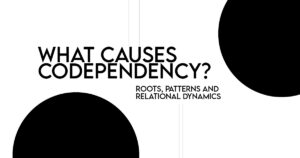Mental health is an issue that is very individualistic and intricate. Schizophrenia and schizoaffective disorder are among the numerous disorders that afflict people because of their similar symptoms and the difficulties in defining them. It is crucial to realize the differences between the two conditions not only to the clinicians but also to people and families trying to navigate the maze of psychotic disorders.
We will not stop at the labels, but in this blog, we will explore the differences between schizophrenia and schizoaffective and shed some light on how each of the two conditions impacts life on a daily basis and what can be done through treatment to contribute to recovery.
Overview of Mental Health and Psychotic Disorders
The mental health area is very broad and involved in terms of the various conditions which influence, the way, people think, feel and act. The spectrum of mood disorders like depression and bipolar disorder to psychotic disorders like schizophrenia are enormous and diverse.

Psychotic disorders are those that are characterized by distortions in perception and thinking, which results in distorted reality. Individuals having the disorders might have hallucinations, delusions or disorganized thinking. These symptoms may interfere with communication, relationships, and daily functioning, and early diagnosis and treatment may be very important.
The National Institute of Mental Health (NIMH) estimates that about 1 percent of the population in the U.S. has schizophrenia, and an even smaller proportion of people suffer through a schizoaffective disorder. The two are chronic but can be treated through a proper combination of medication, therapy and social support.
Nashville Mental Health
Understanding Mental Health: A Broader Perspective
Mental health is not the lack of sickness – it is a state of moderation in the feelings, thoughts, and behavior. When a person is faced with a psychotic disorder, the balance is disturbed, which tends to lead to isolation and misunderstanding.
The increased awareness of mental health in society has facilitated the seeking of help; nevertheless, there is still stigma. Early intervention can be achieved through the identification of the early symptoms, including withdrawal, paranoia, or excessive mood swings. Regardless of whether it is a case of schizophrenia or a case of schizoaffective disorder, caring and informed care is the key to long-term recovery.
Defining Psychotic Disorders: Key Characteristics
In essence, psychotic disorders involve a loss of reality. The nature and extent of symptoms, however, vary in conditions. The following is the comparison between the schizophrenia and schizoaffective disorder:
| Feature | Schizoaffective Disorder | Schizophrenia |
| Primary Symptoms | Combination of psychosis and mood episodes (mania or depression) | Persistent psychosis without significant mood episodes |
| Mood Component | Prominent and integrated into the illness | Typically absent or secondary |
| Onset and Course | Fluctuates between psychotic and mood symptoms | Continuous psychotic symptoms with limited emotional variation |
| Treatment Focus | Addresses both psychotic and mood symptoms | Focuses primarily on managing psychotic symptoms |
| Prognosis | Variable; better with early treatment | Often chronic but manageable with consistent care |
This table highlights the crucial aspect of the matter, and though the two disorders, schizophrenia and schizoaffective, have certain similarities, the presence of serious mood symptoms distinguishes schizoaffective disorder from schizophrenia.
The Mayo Clinic provides an explanation of the differences between these disorders in terms of clinical presentation and treatment approach in a very clear way.
Exploring Mood Disorders and Their Impact
Mood disorders are critical in distinguishing schizoaffective disorder from schizophrenia. In schizoaffective disorder, the sufferers have episodes of depression, mania or both – in combination with psychotic experiences such as hallucinations or delusions.
As an example, one may go through periods of depression, which is characterized by lack of hope and exhaustion, then shift to mania characterized by energy, and impulsiveness. These mood swings have the potential to enhance the psychotic symptoms, forming a complicated clinical image.
Unpacking Bipolar Disorder: Symptoms and Challenges
Since bipolar disorder also implies the alternation of moods, it is often represented by the similarity to schizoaffective disorder. The major distinction however, is the psychotic symptoms present. Hallucinations or delusions in bipolar disorder do not manifest in the base of the mood. They may also happen in the absence of mood symptoms in schizophrenic disorder.
Among the typical difficulties of bipolar disorder patients, there are:
- Problem having stable relationships.
- Manic-related impulsive decision-making.
- Symptoms of depression, depression, fatigue, guilt, and withdrawal.
- Difficulty in sticking to therapy in mood swings.
The knowledge of these obstacles assists healthcare practitioners to distinguish between bipolar disorder and other psychotic disorders such as schizophrenia or schizoaffective disorder.
Distinguishing Between Hallucinations and Delusions
Comparing the schizoaffective vs schizophrenia, it is imperative to have knowledge of the difference between hallucinations and delusions. These are characteristic features of psychosis, though they appear differently:
Hallucinations include perceiving things that aren’t there, like hearing voices, seeing visions, or feeling something despite no external stimulus. Delusions are strong beliefs that are maintained even after being proven false – like the belief that one has special abilities, or they are being victimized by some unknown powers.
Approaches to Treatment Options for Psychotic and Mood Disorders
Psychotic disorders and mood disorders are two components that demand an integrative approach in their treatment. The treatment plan may include, depending on the diagnosis – be it schizophrenia, schizophrenic disorder, or bipolar disorder:
- Medication Management. Hallucinations and delusions are usually treated with antipsychotics, whereas mood stabilizers or antidepressants can treat emotional symptoms.
- Psychotherapy. Cognitive Behavioral Therapy (CBT) and supportive therapy will aid the person to acquire coping strategies, the ability to test reality, and manage emotions.
Nashville Mental Health
Expert Guidance and Support From Nashville Mental Health
At Nashville Mental Health, we realize that the experience of every person with schizoaffective disorder or schizophrenia is different. Our clinicians can use evidence-based assessment to accurately diagnose and offer personalized treatment plans that will be applicable to the needs of each individual. We provide full psychiatric assessments, medication care and psychotherapy to achieve long-term stability.
Our caring staff strives to assist clients and their families to overcome the issues of psychotic problems and mood disorders in a dignified, empathetic and professional manner. Contact Nashville Mental Health to get help today.
FAQs
What are the key differences in diagnosis between schizoaffective disorder and schizophrenia?
This is primarily due to the mood symptoms. Schizoaffective disorder entails the presence of psychotic and mood symptoms, whilst schizophrenia mainly entails the presence of psychosis and little disturbance in mood.
How do treatment options vary for schizoaffective disorder compared to bipolar disorder?
The treatment of schizophrenic disorder is aimed at curing both mood and psychotic symptoms, whereas bipolar disorder is aimed at balancing mood and avoiding manic or depressive episodes.
What role do hallucinations and delusions play in differentiating between psychotic disorders and mood disorders?
Hallucinations and delusions are key to the psychotic disorders but can manifest at the high mood stages in mood disorders, enabling the clinician to make the correct diagnosis.
Can someone with schizophrenia also experience symptoms of a mood disorder, such as bipolar disorder?
Yes, individuals with schizophrenia can experience mood symptoms, but if these symptoms are frequent and significant, the diagnosis may shift toward schizoaffective disorder.
Nashville Mental Health
How is the approach to managing psychotic disorders different from treating mood disorders?
Psychotic disorders require antipsychotic medication and reality-based therapy, while mood disorders often respond better to mood stabilizers and cognitive-behavioral therapy.





